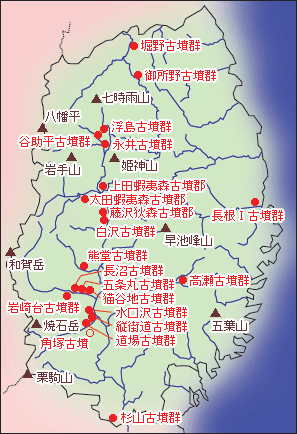From the 7th century, burial mounds will be built around the prefecture. Its characteristic, called "end-of-life burial mound", is that it is mostly small-scale, group, and has no giant stone chambers. Since the early modern times, many of the things that were called "Ezozuka" or "Ezo Forest" in the local area correspond to this terminal tomb.
The main distribution is at the estuary, middle and upper reaches of the main tributary rivers of the Kitakami River basin, mostly small mounds of more than 2 meters and less than 15 meters, with a diameter of around 10 meters and a few from one There are dozens of groups. Burial goods are accessories, armors, harnesses, agricultural tools, etc. A tin (stain) cocoon (early bracelet) that is said to have been distributed starting from Hokkaido Shakotan Peninsula, a gilt in a glass called Middle Eastern origin Sandwich glass, currency representing a relationship with the Ritsury 国家 country (ど う か ど う か い ち や や や や や や 金 具 か か か か か = = = = black lacquered leather band in the morning, gold, silver, copper, etc. Metal fittings for decoration of ornaments), Northern obsidian round scraper (round scratcher = a stone tool that creates a sloping blade with scraps or sharp edges at the end or side edge of a stone blade. It is used to cut or cut) There are many different types of armor, such as armored swords and swords.
Iwate Terminal Tombs
Updated Date: 2019-03-16

